Each year the staff of the Aero-News Network attempts to name
those aircraft that distinguish themselves in the previous year.
This year, like previous years, has been a difficult one to judge
from the standpoint of determining what we like to call the "Best
of the Breed."
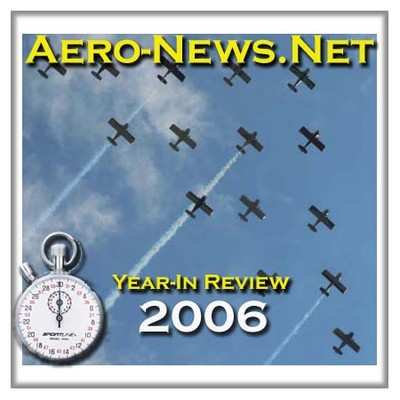
 The general aviation industry, after
several years of somewhat revolutionary updates, is settling into a
more evolutionary path at the moment... one that eschews truly
monumental upgrades, but still manages to demonstrate exciting
progress and better products from year to year. And, as each of
these products evolves and becomes better from year to year, it
sure as hell makes our task a whole lot more difficult in
trying to distinguish one truly outstanding aircraft from another.
2006 represents the most difficult year we have encountered in
attempting to not only name the best Plane Of The Year, but the
best plane in a number of pivotal categories.
The general aviation industry, after
several years of somewhat revolutionary updates, is settling into a
more evolutionary path at the moment... one that eschews truly
monumental upgrades, but still manages to demonstrate exciting
progress and better products from year to year. And, as each of
these products evolves and becomes better from year to year, it
sure as hell makes our task a whole lot more difficult in
trying to distinguish one truly outstanding aircraft from another.
2006 represents the most difficult year we have encountered in
attempting to not only name the best Plane Of The Year, but the
best plane in a number of pivotal categories.
As a matter of fact, it strikes us that naming an overall "best"
aircraft across the entire spectrum of general aviation is probably
no longer reasonable. There are simply too many aircraft that have
distinguished themselves in too many outstanding ways for one to
truly be called better than the other on an overall basis. One
man's perfect high-speed Hot-Rod, for instance, becomes the
expensive "way too hot to handle" mistake of another pilot whose
mission requirements may differ markedly. So... we're going to cop
out -- just a bit, mind you. We will name the best aircraft in
individual categories, and reserve the right in the future to
whittle down those categories as necessary. But, the fact of the
matter is that no one airplane is all things to all pilots, and
within the spectrum that we have decided on, these are the aircraft
selections that truly impressed us in each of five categories.
- GA Piston Single
- GA Piston Twin
- SA Experimental Kit
- E-LSA Kit
- S-LSA RTF (Ready To Fly)
Let me also note that while aircraft that previously were named
Best Of Breed in any category, or overall, are eligible for
inclusion in this year's list, we have decided to make it more
difficult (in our judging protocols) for a previous winner to take
the top spot in our judging criteria, so that a repeat winner truly
earns the distinction. Please also note that there are a number of
new categories under consideration, covering other aspects of
aviation, included the BizAv segment, but that we're going to wait
until 2007 before we add those aircraft our annual judging
criteria.
Herewith, our final selections for the category of E-LSA
Kit...
RANS S-7S
Also available as an S-LSA, the RANS S-7S (known as the S-7LS in
RTF S-LSA mode) is a very exciting two place tandem bird that
deserves immediate attention both for its capabilities, as well as
the company that produces it. The S-7S cruises all day long at 110
mph, uses only 325 feet for takeoff, less than 400 feet for
landing, and climbs at 1000 fpm. More than that, its got all the
panache of a Piper Cub, but with a more modern look and manners
that have few equals... event when the Kansas winds kick up with a
vengeance.
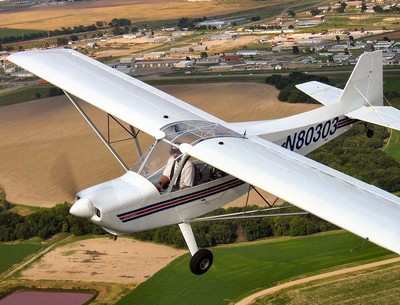
With side doors that may be left open in flight, standard center
control sticks and excellent taildragger manners (demonstrated,
personally, in winds exceeding 30 knots), the S-7S has a useful
load of 532 pounds and a 341 mile range.
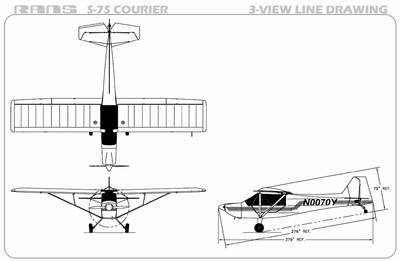
What may be most attractive to the builder who wants to have a
hand in crafting their aircraft, without making a career out of it,
is the availability of a $7500 (additional) Quick-Build kit that
offers assembled wings with fuel tanks installed -- covered and
ready for paint; an assembled and covered tail; and an assembled
and covered fuselage. The QB kit takes a 500-700 hour kit and
whittles the construction time down to an estimated 250 to 350
hours.
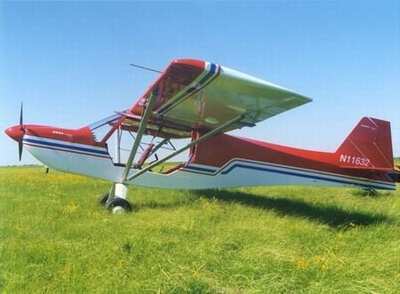
The base kit price for the S-7S is $18,900, without engine and
avionics, but even when all the bills are paid, the S-7S presents
an uncommon value for the sport flyer... and one of our favorite
taildraggers in the LSA arena.
Sonex-Ltd Sonex
John Monnett's little Sonex does a little bit of everything
well... as it should, since it represents the most recent design
work from a guy who has spent decades serving the sport aviation
industry with a plethora of popular little sport aircraft. The
Sonex is an intensely adorable little two place, side-by-side,
aero-scooter available with either taildragger or trike gear. All
metal, the Sonex is designed to be built from a kit, and no RTF
(Ready To Fly) versions are yet available.
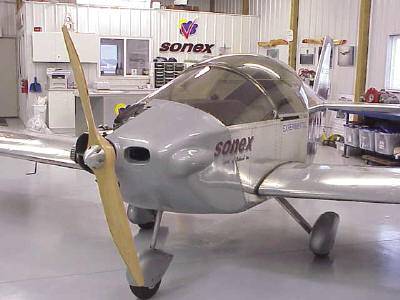
Powered by either the four or six-cylinder Jabiru, or Sonex' own
VW 'Aero-Vee' conversion, the little 1100-1150 pound Sonex is
capable of light aerobatics and is right at home on grass strips.
Using 80-120 HP, the Sonex has a sea-level cruise speed of 130-135
mph, uses 250-400 feet for takeoff, and boasts 480-530 pounds of
useful load. ROC is 800-1400 fpm, and landings need but 500 feet.
The Sonex community is well-supported by the company with a series
of builder seminars, plenty of expert phone-in customer service and
excellent drawings and builder documentation.
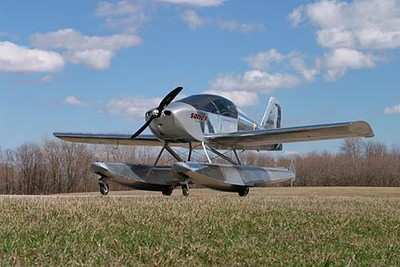
A basic Sonex kit takes 1000-1200 hours to build and is
available for $13,495 (sans powerplant, instruments and the like)
and the company is confident that a reasonably equipped Sonex can
be completed for as little as $25,000 (using the Sonex Aero-Vee
engine). Our flights in the bird have provided some serious grins,
and the overall control harmonies are responsive without being
twitchy... the low-speed behavior is particularly sweet.
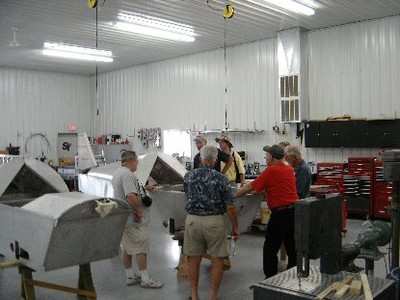
And... if the Sonex doesn't quite ring your bell, there is a
very exciting little V-Tailed version called the Waiex, and a
motorglider variant named the Xenos. Talk about having it YOUR
way...
Progressive Aerodyne SeaRey
Sometimes a design stakes a pivotal position in its market and
just won't let it go -- such is the Progressive Aerodyne SeaRey....
one of the sweetest sport Amphibs to ever grace the airways.
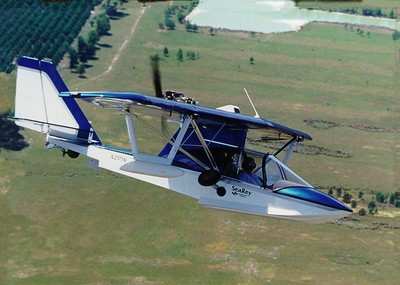
It's another "classic" design that continues to thrive in an
industry that has seen far better days and circumstances. The
little two place SeaRey pusher amphibian is one of the most
delightful offerings in all of sport aviation. While barely a 100
mph cruiser, the Rotax 912/94 powered SeaRey is a gentle flyer with
excellent stability and control properties, amazingly good water
manners, and is one of the more forgiving taildraggers extant. It
has a 550 pound useful load, and climbs 700-1200 fpm (depending on
which Rotax is used and whether flying solo or dual).
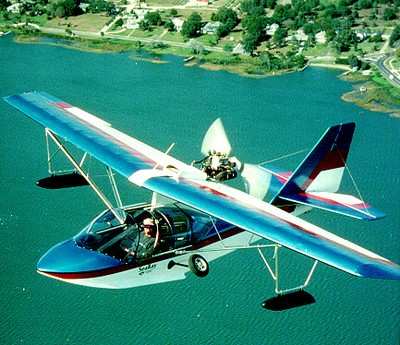
The SeaRey is pretty much alone in its class... no other Amphib
does as much, as well, or as pleasantly as the little Florida
flyer. Backed up by a family operation with decades of experience
in the sport aviation business, the customer service record is
good, the kit is well done and the bang for the buck is the best
you can find in a water-capable aircraft.
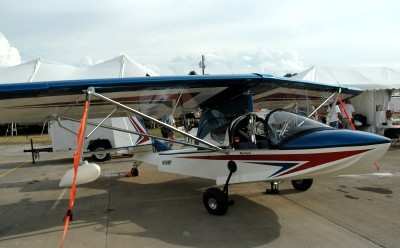
But most of all, the SeaRey is fun -- a lot of fun -- and I
gotta tell you that one of my favorite memories of all time is
bootlegging a step turn across a little pond in Central Florida
with a pretty red-head giggling next to me as we flew off and
hop-scotched ourselves across a dozen little lakes and ponds in as
many minutes. The SeaRey is a gas -- and a pretty consistent choice
on our 'Best of Breed' lists. Highly recommended.
Be sure to check back with us in a few days to see which of
these aircraft earned Top Honors as the "Best of the Breed" in this
category!
 NTSB Final Report: Cozy Cub
NTSB Final Report: Cozy Cub ANN FAQ: Contributing To Aero-TV
ANN FAQ: Contributing To Aero-TV Classic Aero-TV: Seated On The Edge Of Forever -- A PPC's Bird's Eye View
Classic Aero-TV: Seated On The Edge Of Forever -- A PPC's Bird's Eye View ANN's Daily Aero-Linx (04.29.25)
ANN's Daily Aero-Linx (04.29.25) ANN's Daily Aero-Term (04.29.25): Execute Missed Approach
ANN's Daily Aero-Term (04.29.25): Execute Missed Approach













